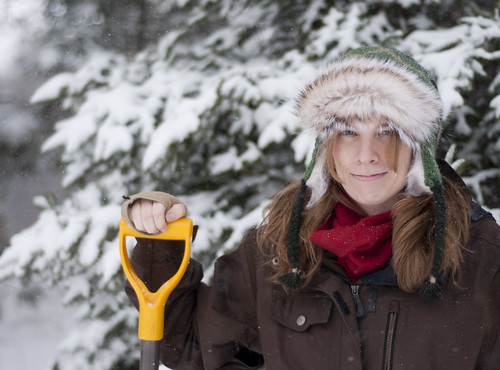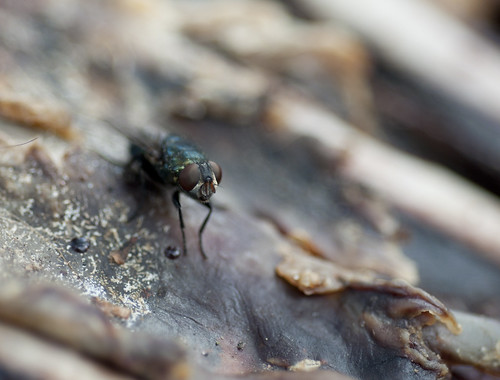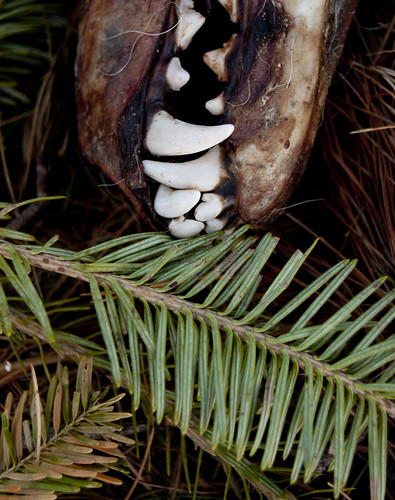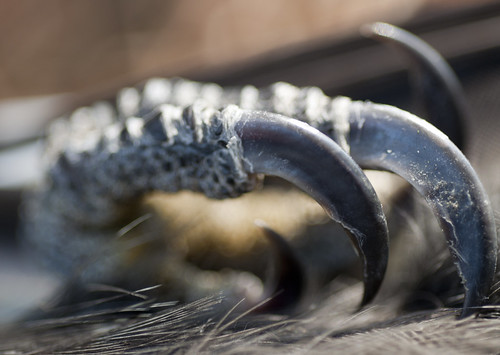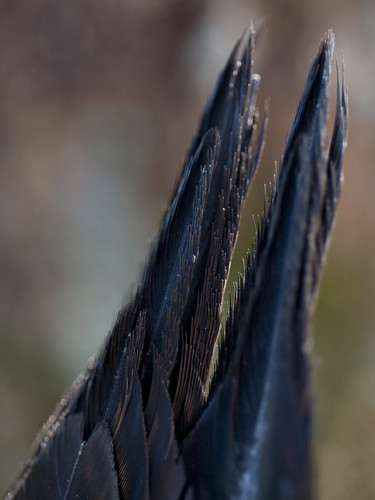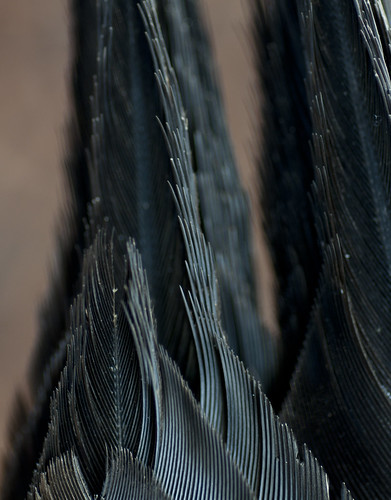One of the key purposes of this project is to explore the importance and usefulness of animal death in the ecosystem. A carcass is very useful for flies as well as crows; it's useful for raccoons and gulls, and squirrels in search of calcium. And, of course, a carcass is equally useful for the animals that prey upon these scavengers. But is it possible for dead animals to be useful for people? In a scientific sense, they're useful to biologists – for example, roadkill is valuable for tracking the distribution and migration of certain species (notably, the Virginia Opossum).
But there are human scavengers, as well. It's not uncommon for people to eat freshly-hit animals; I know a handful of folks who do, and I've seen, firsthand, how much meat can be had from a roadkill yearling deer. Flesh aside, there is also fur, a material that has been used in clothing for millennia.
Retrieving roadkilled animals for their fur isn't a novel idea; it's been happening for a long time, and these days, it seems to be occurring more often. More states are creating laws that allow the salvage of roadkill, both for fur and food – and in my book, it's a good move. The clearing of dead critters from roadways helps reduce the number of animal scavengers that are also hit by cars; it stops "animal pancakes" and "road hamburger" before it happens; it is a source of ethical meat and fur; the sale of these pelts can generate income from an animal that would otherwise be left to desiccate or liquefy on the side of the road.
Roadkill laws vary from state to state; while some states, such as Michigan, allow for the salvage of most animals (the proper hunting license is necessary and the animal must be in season, with the exception of bears and deer – they can be called in at any time of the year), other states, such as California, don't allow it, period. Alaska is an interesting case: roadkill must be reported immediately; large animals, such as caribou and moose, are collected by volunteers and the meat is distributed to those in need.
* * *
Over this past winter, it became pretty clear that I needed a warmer hat, and so did Steph. I wanted to line a hat with fur, but I wasn't keen on using the pelt of a trapped or hunted animal. As luck would have it, a taxidermist was selling tanned pelts online – and they came from roadkilled animals. The pelts weren't perfect: there was roadburn and missing legs or tails, spots where hair had slipped, and the fur wasn't prime like that of the furbearers sought by trappers.
The first roadkill pelt I bought was that of a badger. Most of its face was gone, as were the feet, and there were several areas of roadburn and slipped fur throughout. Despite the flaws, there was plenty of fur to work with, and in the end, I was able to line a hat for Steph, earflaps and all:
About a month or so later, I purchased a second roadkill pelt, this time, from a red fox. It had been hit at a time when it was transitioning into its winter coat: half the fur was thick and plush, while the other half was short and woolly. The tail was bobbed (and full of burrs and sticktights), and the snout had a sizable area of fur slippage. Still, there was more than enough useable fur, and just the other day, I finally finished lining a hat for myself:
These hats were a fun, challenging project for me. The badger hat was the more difficult of the two: it was the first, which made it harder to assemble, and the badger, I later found, had far thicker skin than the fox. The fox hat, on the other hand, was easier to make; the skin was thinner, and this time around, I was using a glovers needle to sew. The hardest part of all, however, was making the first cuts into those beautiful pelts. Neither was perfect, of course, but it was especially heartbreaking to cut into the fox pelt. I had to remind myself that these animals had died needlessly, victims of the roads, and that they would be far more useful as winter hats than as whole pelts with no real function.
I'd like to continue making these hats in the future, preferably with roadkill animals I find myself. It's a bit of a challenge here in the Upper Peninsula – fresh roadkill doesn't stick around for long, thanks to other human scavengers. It's not a bad problem to have, however; I'm glad that there are so many people up here who know usefulness when they see it, whether it be for food, fur, or both.

